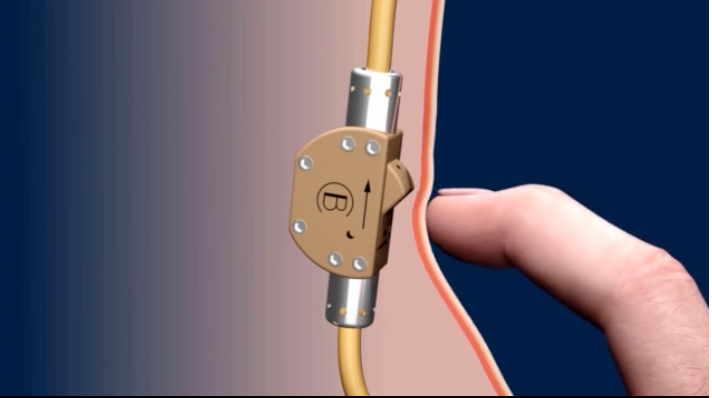New Male Birth Control, ‘Sperm Switch,' Temporaily Sterilizes Men With The Flip Of A Switch

Twenty years ago, when German carpenter Clemens Bimek watched a documentary about contraception, he came up with the idea of temporary male sterilization. In 2000, Bimek filed the first patent for his idea — an actual switch that allowed a man to control sperm flow. The device "Bimek SLV," named after the inventor, is the size of a gummy bear and could change the future of vasectomies.
The tiny valve is surgically implanted and attached to the vas deferens, or the spermatic ducts sperm moves through during ejaculation. The switch turns on and off when it's pressed down on the man’s flesh, which is accessible just beneath the scrotum's skin. When the mechanical switch is turned off, the valve closes and diverts sperm cells by cutting them off and preventing them from reaching the seminal fluid, making the man temporarily sterile.

It's similar to how a vasectomy works. Sperm are made in the testicles and pass through the vas deferences. Once it passes through, it mixes with seminal fluids and forms semen unless men undergo surgery to close the tubes. According to Planned Parenthood, without sperm, ejaculation fluids cannot cause pregnancy. It's a relatively safe and routine procedure; however, because it's permanent, there's no way to reverse the surgery. So the sperm switch could be an alternative, working similarly to the implanted birth control options available for women.
The valve invention, which is made of a medical-grade polymer used in other types of implants, can stay closed for up to three months before running the risk of it getting clogged. Without complications, though, the device can be inserted and work effectively up to a lifetime.
"Many doctors that I have consulted, have not taken me seriously," Bimek told German magazine Spiegel. "But there were also some who have encouraged me to continue to tinker and who have supported me with knowledge."
The switch has only been tested on one person, and that's Bimek himself. In June 2009, he began testing a prototype version by implanting two different valves. Over the last six years, he has continued to make adjustments and improve his invention. When the valve isn't in use, the switch has had no impact on Bimek's sperm count to day.
This year, the company is looking to recruit 25 men to test out the efficacy of their prototype, in hopes of having a final product ready for sale by 2018.
Published by Medicaldaily.com



























